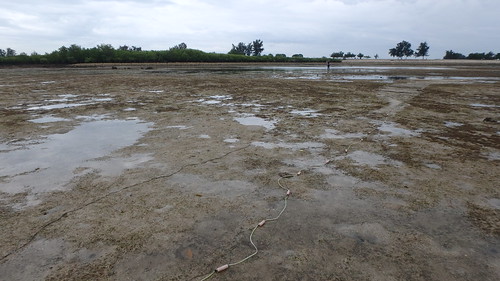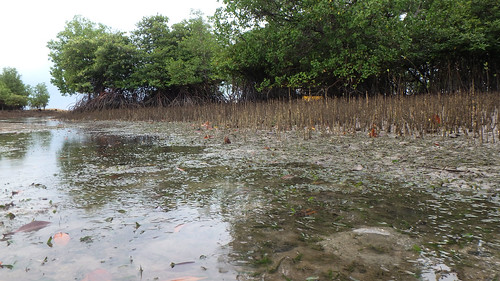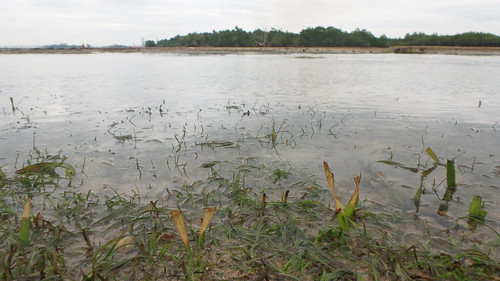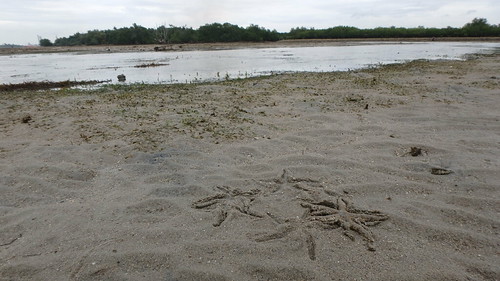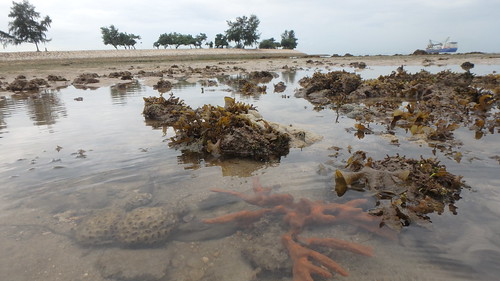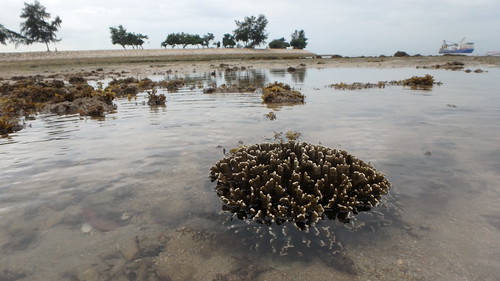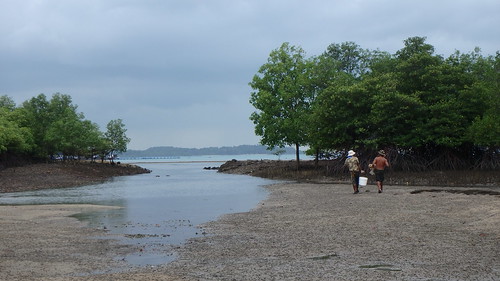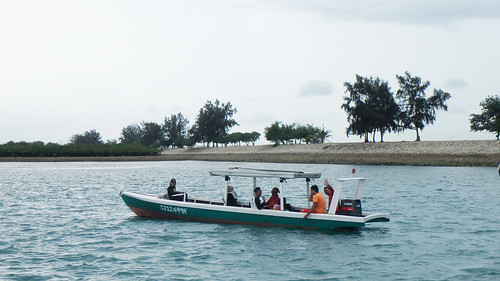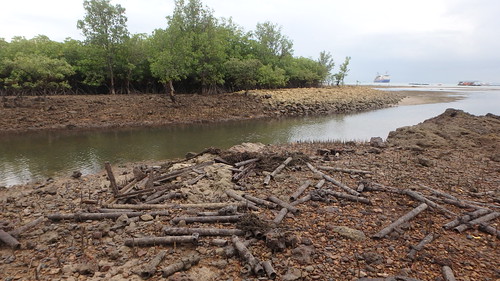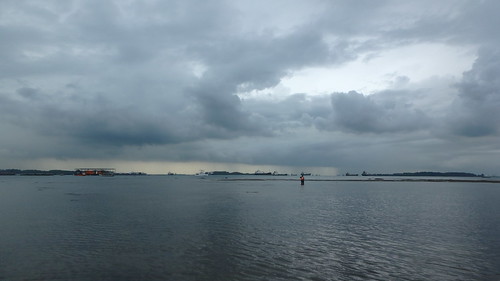The seagrasses also don't appear to be doing well, with cropped Tape seagrasses. The shores were rather quiet.
Update on the net: Eva Lim who works at Barramundi Asia almost immediately replied on the social media post about the net: "what you posted was indeed heartbreaking. We will like to work with your team to remove these nets, and perhaps help to monitor the area together to prevent fishermen from casting nets in this area." She will be looking to activate the farm team to remove the net, and keep an eye out to prevent such nets from being laid in the future. Hurray!
Pulau Semakau is NOT the same as the Semakau Landfill. The Landfill was created by destroying all of Pulau Saking, and about half of the original Pulau Semakau by building a very long seawall. Fortunately, the landfill was constructed and is managed in such a way that the original mangroves, seagrass meadows and reefs on Pulau Semakau were allowed to remain. The southern Semakau shore that we surveyed today has replanted mangroves next to the seawall, and on the other side of a small stream, the natural mangroves of Pulau Semakau.
One end of the fishing net was tied to the seawall. The other end extended well beyond the natural mangrove area. Above is my estimated location and length of the net. Here are some of the fishes trapped in the net.
The net also trapped some cuttlefishes and crabs, snagged on corals and some small horseshoe crabs (I carefully released two).
More photos of the net and what it trapped.
The fishing net looked very recently laid. The fishes trapped were still alive. We did not have enough people to remove such a long fishing net. And if we damage the the net to release the fishes, it would be abandoned by the owners. It was heartbreaking, but we decided to leave the net on the shore after documenting the animals trapped in it. We can only hope the people who laid it will remove the net soon. This incident has also been shared on the Project Driftnet blog.
I had a quick look at the mangroves here. Two big mangrove trees at the seaward side are dead at the natural part of Pulau Semakau. Seems similar as on our last trip here in Feb 2016.
There were a few dead mangrove trees among the replanted mangroves at the seaward side.
But deeper inside the mangroves, all appears well. With sapling sprouting near the mature trees.
Seagrasses are growing near the natural mangroves.
Alas, all the Tape seagrasses I saw here were cropped.
The Tape seagrasses were also cropped short on the intertidal flats. Similar to what we saw on our last trip here in Feb 2016 and the previous trip in July 2015.
But other seagrasses seemed to be doing ok. Although most of them had heavy growths of epiphytes.
There are still a lot of Common sea stars on the shore. Many of them were in 'mating' position.
The tide was rather high so we could survey the reef edge. But the rocky areas are sprinkled with small corals and other marine life.
There are a lot of Giant carpet anemones on this shore, I saw one clown anemonefish in one. There were also many Frilly sea anemones near the seawall. Most of the sea sea anemones were not bleaching, but a few of the anemones were rather pale.
There are also a lot of Fire anemones here. Some looked rather pale.
There are not a lot of hard corals high up on the intertidal. But the few I saw seemed alright.
The few hard corals I saw were small but none were bleaching and only one had small dead portions. We did not manage to survey this shore at the height of the mass coral bleaching in 2016.
There were also some zoanthids, most look alright although one Sea mat zoanthid colony looked a little pale. I saw many Upside-down jellyfish. I saw one cerianthid, one Garlic bread sea cucumber and very little else.
I saw a sprinkling of various sponges. We saw a much livelier shore on our last trip here in Feb 2016.
This shore seems rather heavily impacted by humans. While in the mangroves, I met two men carrying a cast net. They were friendly and told me they had been harvesting prawns further inside the mangroves. I asked and they said they did not lay the long fishing net.
There are many small boats that come to this shore to fish. We waved hello to those nearby.
Near the mouth of the stream coming out of the mangroves, there was a pile of pipes and other trash that look like they have been there a long time. Such trash could only have been dumped there by boat.
We saw similar signs of impact on our last visit here in Feb 2016. Following which, Barramundi Asia took me on a tour of their farm and assured me they and their workers will damage Pulau Semakau.
We are grateful to have a nice dry survey despite rain falling all around us!
Photos shared by others on this trip
- Jialin Liu on facebook.
- Loh Kok Sheng on facebook.
- Chay Hoon on facebook.
- Heng Pei Yan on facebook and on her blog here and here.

